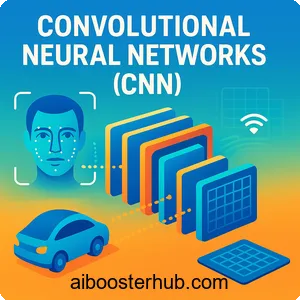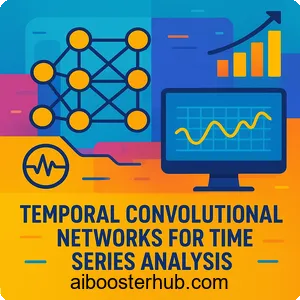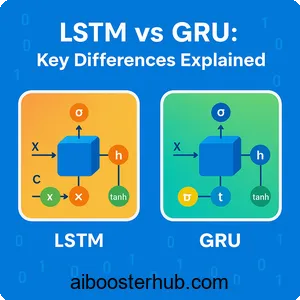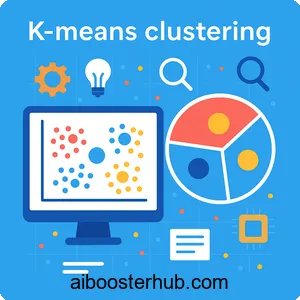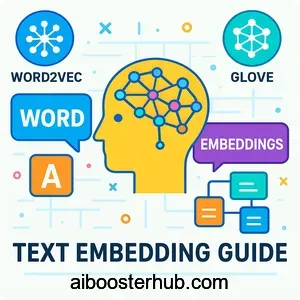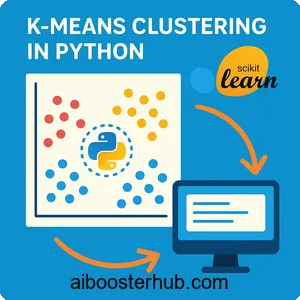Transfer Learning: Techniques and Applications in Deep Learning
The landscape of artificial intelligence has been revolutionized by a powerful paradigm that allows models to leverage knowledge gained from one task to excel at another. This approach, known as transfer learning, has become a cornerstone of modern deep learning, enabling practitioners to build sophisticated AI systems without starting from scratch every time. Understanding transfer learning is essential for anyone working with neural networks, as it offers a practical solution to common challenges like limited data and computational constraints.
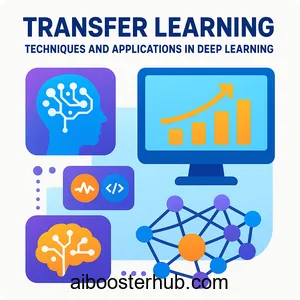
Content
Toggle1. Understanding transfer learning fundamentals
Transfer learning represents a machine learning methodology where a model developed for one task is reused as the starting point for a model on a second task. The transfer definition in the context of deep learning refers to the process of transferring knowledge—typically in the form of learned features or weights—from a source domain to a target domain. This lateral transfer meaning extends beyond simple model reuse; it embodies the principle that knowledge gained while solving one problem can be applied to different but related problems.
The motivation behind transfer learning stems from a simple observation: humans don’t learn everything from scratch. When we learn to ride a bicycle, we transfer balance and coordination skills we’ve already developed. Similarly, in deep learning transfer, models can leverage features learned from large datasets to perform well on new tasks with minimal additional training.
Consider the fundamental equation that describes the transfer learning objective:
$$\theta^* = \arg\min_{\theta} \; \mathcal{L}_{\text{target}}\!\big(f_{\theta}(x)\big) + \lambda \, \|\theta – \theta_{\text{source}}\|^2
$$
Here, \(\theta^*\) represents the optimal parameters for the target task, \(\mathcal{L}_{\text{target}}\) is the loss function for the target domain, \( f_{\theta} \) is the model parameterized by \(\theta\), and \(\theta_{source}\) represents the pre-trained weights. The regularization term \(\lambda |\theta – \theta_{source}|^2\) encourages the new parameters to stay close to the pre-trained ones, preserving learned knowledge.
Why transfer learning works
The effectiveness of transfer learning in neural networks relies on the hierarchical nature of feature learning. In convolutional neural networks, for instance, early layers typically learn general features like edges, textures, and basic shapes—features that are universally useful across many visual tasks. Deeper layers learn increasingly task-specific features. This hierarchy makes it possible to reuse early layer representations while adapting later layers to new tasks.
The mathematical intuition can be expressed through the concept of feature similarity. If we denote the feature representation learned by a pre-trained model as \(\phi_{source}(x)\) and the ideal features for the target task as \(\phi_{target}(x)\), transfer learning is effective when:
$$ \text{similarity}(\phi_{source}(x), \phi_{target}(x)) > \text{threshold} $$
This similarity is particularly high when both domains share underlying statistical properties or when the source task is sufficiently general to have learned broadly applicable features.
2. Core techniques in transfer learning
Transfer learning encompasses several distinct approaches, each suited to different scenarios and constraints. Understanding these techniques allows practitioners to select the most appropriate strategy for their specific use case.
Feature extraction
Feature extraction treats the pre-trained model as a fixed feature extractor. The pre-trained model’s weights remain frozen, and only a new classifier or regressor is trained on top of the extracted features. This approach is computationally efficient and works well when the target dataset is small.
Here’s a practical implementation using a pre-trained ResNet model:
import torch
import torch.nn as nn
from torchvision import models
# Load pre-trained ResNet50
base_model = models.resnet50(pretrained=True)
# Freeze all parameters
for param in base_model.parameters():
param.requires_grad = False
# Replace the final layer
num_features = base_model.fc.in_features
base_model.fc = nn.Linear(num_features, 10) # 10 classes for target task
# Only the final layer will be trained
optimizer = torch.optim.Adam(base_model.fc.parameters(), lr=0.001)
In this approach, the forward pass can be represented as:
$$ \hat{y} = g(W_{new} \cdot \phi_{frozen}(x) + b_{new}) $$
where \(\phi_{frozen}(x)\) represents the frozen feature extraction layers, and \(W_{new}, b_{new}\) are the trainable parameters of the new classifier (g).
Fine-tuning
Fine-tuning involves unfreezing some or all layers of the pre-trained model and continuing training on the new dataset. This technique allows the model to adapt its learned representations to the specific characteristics of the target domain.
# Continue from previous example
# Unfreeze the last few layers for fine-tuning
for param in base_model.layer4.parameters():
param.requires_grad = True
# Use different learning rates for different parts
optimizer = torch.optim.Adam([
{'params': base_model.layer4.parameters(), 'lr': 0.0001},
{'params': base_model.fc.parameters(), 'lr': 0.001}
], lr=0.001)
The fine-tuning process modifies the objective to:
$$ \theta_{fine-tuned} = \arg\min_\theta \sum_{(x,y) \in D_{target}} \mathcal{L}(f_\theta(x), y) $$
where \(D_{target}\) is the target dataset and \(\theta\) is initialized with \(\theta_{source}\).
Domain adaptation
Domain adaptation addresses the challenge when source and target domains have different distributions. The goal is to learn domain-invariant features that perform well on both domains.
One popular approach uses adversarial training to align feature distributions:
import torch.nn as nn
class DomainAdaptationModel(nn.Module):
def __init__(self, feature_extractor, num_classes):
super().__init__()
self.features = feature_extractor
self.classifier = nn.Linear(512, num_classes)
self.domain_discriminator = nn.Sequential(
nn.Linear(512, 256),
nn.ReLU(),
nn.Linear(256, 1),
nn.Sigmoid()
)
def forward(self, x, alpha=1.0):
features = self.features(x)
# Gradient reversal for domain adaptation
reversed_features = GradientReversalLayer.apply(features, alpha)
class_output = self.classifier(features)
domain_output = self.domain_discriminator(reversed_features)
return class_output, domain_output
The domain adaptation loss combines classification and domain confusion objectives:
$$\mathcal{L}_{\text{total}} = \mathcal{L}_{\text{class}}(y, \hat{y}) – \lambda \, \mathcal{L}_{\text{domain}}(d, \hat{d})
$$
where \(d\) is the true domain label and \(\hat{d}\) is the predicted domain label. The negative sign encourages domain-invariant features.
3. Pre-trained models in practice
Pre-trained models serve as the foundation for transfer learning applications. These models have been trained on massive datasets and capture rich, generalizable representations that can be adapted to countless downstream tasks.
Popular architectures and their characteristics
Different pre-trained models excel at different types of tasks. Understanding their architectures helps in selecting the right model for your application.
ResNet (Residual Networks) introduces skip connections that enable training of very deep networks:
$$ y = \mathcal{F}(x, {W_i}) + x $$
where \(\mathcal{F}\) represents the residual mapping. This architecture is particularly effective for image classification and has variants from ResNet-18 to ResNet-152.
VGG Networks follow a simple but effective philosophy: deep networks with small filters. Their uniform architecture makes them easy to understand and modify:
from torchvision import models
# Different pre-trained models for different needs
vgg16 = models.vgg16(pretrained=True) # Simple, interpretable
resnet101 = models.resnet101(pretrained=True) # Deep, accurate
efficientnet = models.efficientnet_b0(pretrained=True) # Efficient, scalable
Transformer-based models like Vision Transformers (ViT) have recently gained prominence for their ability to capture long-range dependencies:
$$ \text{Attention}(Q, K, V) = \text{softmax}\left(\frac{QK^T}{\sqrt{d_k}}\right)V $$
Selecting the right pre-trained model
The choice of pre-trained models depends on several factors:
- Task similarity: Choose models pre-trained on tasks similar to your target task
- Dataset size: Smaller target datasets benefit more from deeper pre-trained models
- Computational resources: Larger models require more memory and computation
- Inference speed requirements: Real-time applications may need efficient architectures
Here’s a practical decision-making framework:
def select_pretrained_model(target_dataset_size, similarity_to_imagenet,
compute_budget, speed_required):
"""
Helper function to select appropriate pre-trained model
"""
if target_dataset_size < 1000:
if speed_required:
return "mobilenet_v2"
else:
return "resnet50"
elif target_dataset_size < 10000:
if similarity_to_imagenet > 0.7:
return "resnet101"
else:
return "efficientnet_b3"
else:
if compute_budget == "high":
return "efficientnet_b7"
else:
return "resnet152"
4. Applications across domains
Transfer learning has proven transformative across numerous domains, demonstrating its versatility and practical value. Let’s explore several key application areas where deep learning transfer has made significant impact.
Computer vision applications
In computer vision, transfer learning has become the de facto approach for most tasks. Models pre-trained on ImageNet serve as powerful feature extractors for diverse visual recognition problems.
Medical image analysis exemplifies the power of transfer learning with limited data:
import torch
import torch.nn as nn
from torchvision import models, transforms
class MedicalImageClassifier(nn.Module):
def __init__(self, num_diseases):
super().__init__()
# Use pre-trained DenseNet
self.base_model = models.densenet121(pretrained=True)
# Freeze early layers
for param in list(self.base_model.parameters())[:-20]:
param.requires_grad = False
# Replace classifier for medical task
num_features = self.base_model.classifier.in_features
self.base_model.classifier = nn.Sequential(
nn.Linear(num_features, 512),
nn.ReLU(),
nn.Dropout(0.3),
nn.Linear(512, num_diseases)
)
def forward(self, x):
return self.base_model(x)
# Medical image preprocessing
medical_transforms = transforms.Compose([
transforms.Resize(256),
transforms.CenterCrop(224),
transforms.ToTensor(),
transforms.Normalize([0.485, 0.456, 0.406], [0.229, 0.224, 0.225])
])
Object detection leverages transfer learning through backbone networks:
from torchvision.models.detection import fasterrcnn_resnet50_fpn
# Pre-trained Faster R-CNN with ResNet-50 backbone
model = fasterrcnn_resnet50_fpn(pretrained=True)
# Fine-tune for custom object detection
num_classes = 5 # background + 4 object classes
in_features = model.roi_heads.box_predictor.cls_score.in_features
model.roi_heads.box_predictor = FastRCNNPredictor(in_features, num_classes)
The effectiveness of transfer learning in object detection can be quantified by comparing training convergence:
$$ \text{Speedup} = \frac{t_{from_scratch}}{t_{transfer}} \approx 5-10\times $$
Natural language processing
In NLP, transformer-based pre-trained models like BERT, GPT, and their variants have revolutionized how we approach language understanding tasks.
from transformers import BertTokenizer, BertForSequenceClassification
import torch
# Load pre-trained BERT model
tokenizer = BertTokenizer.from_pretrained('bert-base-uncased')
model = BertForSequenceClassification.from_pretrained(
'bert-base-uncased',
num_labels=3, # sentiment: positive, negative, neutral
output_attentions=False,
output_hidden_states=False
)
# Fine-tune for sentiment analysis
def prepare_input(texts):
encoded = tokenizer(
texts,
padding=True,
truncation=True,
max_length=128,
return_tensors='pt'
)
return encoded
# Example usage
texts = ["This product is amazing!", "Terrible experience", "It's okay"]
inputs = prepare_input(texts)
outputs = model(**inputs)
The attention mechanism in transformers enables effective transfer:
$$ \text{MultiHead}(Q, K, V) = \text{Concat}(\text{head}_1, …, \text{head}_h)W^O $$
where each \(\text{head}_i = \text{Attention}(QW_i^Q, KW_i^K, VW_i^V)\).
Cross-domain transfer
One of the most exciting frontiers is transfer learning across different modalities and domains.
Image-to-text tasks combine visual and language understanding:
class ImageCaptioningModel(nn.Module):
def __init__(self, embed_size, hidden_size, vocab_size):
super().__init__()
# Pre-trained CNN encoder
resnet = models.resnet50(pretrained=True)
modules = list(resnet.children())[:-1]
self.encoder = nn.Sequential(*modules)
# Freeze encoder
for param in self.encoder.parameters():
param.requires_grad = False
# Trainable decoder
self.embed = nn.Embedding(vocab_size, embed_size)
self.lstm = nn.LSTM(embed_size, hidden_size, num_layers=2)
self.linear = nn.Linear(hidden_size, vocab_size)
def forward(self, images, captions):
features = self.encoder(images)
features = features.reshape(features.size(0), -1)
embeddings = self.embed(captions)
embeddings = torch.cat([features.unsqueeze(1), embeddings], dim=1)
hiddens, _ = self.lstm(embeddings)
outputs = self.linear(hiddens)
return outputs
5. Best practices and optimization strategies
Successful transfer learning requires careful consideration of several factors. Following established best practices can dramatically improve results and reduce development time.
Learning rate strategies
Different parts of a transferred model should often use different learning rates. Pre-trained layers contain valuable knowledge and should be updated more cautiously than randomly initialized layers.
def create_layered_optimizer(model, base_lr=0.001):
"""
Create optimizer with discriminative learning rates
"""
# Different learning rates for different layers
params = [
{'params': model.layer1.parameters(), 'lr': base_lr * 0.01},
{'params': model.layer2.parameters(), 'lr': base_lr * 0.1},
{'params': model.layer3.parameters(), 'lr': base_lr * 0.5},
{'params': model.layer4.parameters(), 'lr': base_lr},
{'params': model.fc.parameters(), 'lr': base_lr * 10}
]
return torch.optim.Adam(params)
# Alternatively, use learning rate scheduling
from torch.optim.lr_scheduler import CosineAnnealingWarmRestarts
optimizer = torch.optim.Adam(model.parameters(), lr=0.001)
scheduler = CosineAnnealingWarmRestarts(
optimizer,
T_0=10, # First restart after 10 epochs
T_mult=2 # Double the period after each restart
)
The learning rate schedule can be formalized as:
$$ \eta_t = \eta_{min} + \frac{1}{2}(\eta_{max} – \eta_{min})(1 + \cos(\frac{T_{cur}}{T_i}\pi)) $$
where \(\eta_t\) is the learning rate at step \(t\), and \(T_{cur}\) tracks epochs since last restart.
Data augmentation for transfer learning
Proper data augmentation helps the pre-trained model adapt to the target domain’s characteristics:
from torchvision import transforms
def get_transfer_transforms(training=True):
if training:
return transforms.Compose([
transforms.RandomResizedCrop(224),
transforms.RandomHorizontalFlip(),
transforms.ColorJitter(brightness=0.2, contrast=0.2,
saturation=0.2, hue=0.1),
transforms.RandomRotation(15),
transforms.ToTensor(),
transforms.Normalize([0.485, 0.456, 0.406],
[0.229, 0.224, 0.225])
])
else:
return transforms.Compose([
transforms.Resize(256),
transforms.CenterCrop(224),
transforms.ToTensor(),
transforms.Normalize([0.485, 0.456, 0.406],
[0.229, 0.224, 0.225])
])
Regularization techniques
Transfer learning models can still overfit, especially when the target dataset is small. Effective regularization is crucial:
class RegularizedTransferModel(nn.Module):
def __init__(self, base_model, num_classes, dropout_rate=0.5):
super().__init__()
self.features = base_model
# Add regularization layers
self.classifier = nn.Sequential(
nn.Dropout(dropout_rate),
nn.Linear(2048, 512),
nn.BatchNorm1d(512),
nn.ReLU(),
nn.Dropout(dropout_rate / 2),
nn.Linear(512, num_classes)
)
def forward(self, x):
features = self.features(x)
return self.classifier(features)
# L2 regularization through weight decay
optimizer = torch.optim.AdamW(
model.parameters(),
lr=0.001,
weight_decay=0.01 # L2 regularization
)
The regularized objective becomes:
$$\mathcal{L}_{\text{total}} = \mathcal{L}_{\text{task}}
+ \lambda_1 \|\theta\|_2^2
+ \lambda_2 \|\theta – \theta_{\text{pretrained}}\|_2^2 $$
Progressive unfreezing
Rather than unfreezing all layers at once, gradually unfreezing layers from top to bottom often yields better results:
def progressive_unfreeze_training(model, train_loader, epochs_per_stage=5):
"""
Progressively unfreeze layers during training
"""
# Stage 1: Train only classifier
for param in model.features.parameters():
param.requires_grad = False
optimizer = torch.optim.Adam(model.classifier.parameters(), lr=0.001)
train_epochs(model, train_loader, optimizer, epochs_per_stage)
# Stage 2: Unfreeze last feature layer
for param in model.features.layer4.parameters():
param.requires_grad = True
optimizer = torch.optim.Adam(model.parameters(), lr=0.0001)
train_epochs(model, train_loader, optimizer, epochs_per_stage)
# Stage 3: Unfreeze all layers with very small learning rate
for param in model.parameters():
param.requires_grad = True
optimizer = torch.optim.Adam(model.parameters(), lr=0.00001)
train_epochs(model, train_loader, optimizer, epochs_per_stage)
6. Challenges and limitations
While transfer learning offers tremendous advantages, it’s important to understand its limitations and potential pitfalls to apply it effectively.
Negative transfer
Negative transfer occurs when the source domain is too dissimilar from the target domain, causing pre-trained knowledge to hurt rather than help performance. This phenomenon can be quantified as:
$$\text{Negative Transfer} =
\text{Performance}_{\text{from\_scratch}} >
\text{Performance}_{\text{transfer}}$$
To detect and mitigate negative transfer:
def evaluate_transfer_benefit(model_scratch, model_transfer, val_loader):
"""
Compare transfer learning against training from scratch
"""
def evaluate(model):
model.eval()
correct = 0
total = 0
with torch.no_grad():
for inputs, labels in val_loader:
outputs = model(inputs)
_, predicted = torch.max(outputs.data, 1)
total += labels.size(0)
correct += (predicted == labels).sum().item()
return correct / total
scratch_acc = evaluate(model_scratch)
transfer_acc = evaluate(model_transfer)
if scratch_acc > transfer_acc:
print(f"Warning: Negative transfer detected!")
print(f"Scratch: {scratch_acc:.4f}, Transfer: {transfer_acc:.4f}")
return False
return True
Domain shift and distribution mismatch
When source and target distributions differ significantly, the pre-trained model’s features may not transfer effectively. The domain shift can be measured using metrics like Maximum Mean Discrepancy (MMD):
$$\text{MMD}^2(\mathcal{P}, \mathcal{Q}) =
\mathbb{E}_{x, x’ \sim \mathcal{P}}[k(x, x’)] +
\mathbb{E}_{y, y’ \sim \mathcal{Q}}[k(y, y’)] –
2\,\mathbb{E}_{x \sim \mathcal{P},\, y \sim \mathcal{Q}}[k(x, y)]$$
def compute_domain_distance(source_features, target_features):
"""
Compute MMD between source and target feature distributions
"""
def rbf_kernel(x, y, gamma=1.0):
return torch.exp(-gamma * torch.cdist(x, y).pow(2))
xx = rbf_kernel(source_features, source_features).mean()
yy = rbf_kernel(target_features, target_features).mean()
xy = rbf_kernel(source_features, target_features).mean()
mmd = xx + yy - 2 * xy
return mmd.sqrt()
Catastrophic forgetting
When fine-tuning aggressively, models may lose valuable pre-trained knowledge. Elastic Weight Consolidation (EWC) helps preserve important parameters:
$$\mathcal{L}_{\text{EWC}} =
\mathcal{L}_{\text{task}} +
\frac{\lambda}{2} \sum_i F_i \, (\theta_i – \theta_{\text{pretrained},\, i})^2$$
where \(F_i\) represents the Fisher information matrix indicating parameter importance:
class EWC:
def __init__(self, model, dataloader, lambda_ewc=1000):
self.model = model
self.lambda_ewc = lambda_ewc
self.fisher_matrix = self._compute_fisher(dataloader)
self.optimal_params = {n: p.clone().detach()
for n, p in model.named_parameters()}
def _compute_fisher(self, dataloader):
fisher = {n: torch.zeros_like(p)
for n, p in self.model.named_parameters()}
self.model.eval()
for inputs, labels in dataloader:
outputs = self.model(inputs)
loss = nn.functional.cross_entropy(outputs, labels)
self.model.zero_grad()
loss.backward()
for n, p in self.model.named_parameters():
if p.grad is not None:
fisher[n] += p.grad.pow(2)
for n in fisher:
fisher[n] /= len(dataloader)
return fisher
def penalty(self):
loss = 0
for n, p in self.model.named_parameters():
if n in self.fisher_matrix:
loss += (self.fisher_matrix[n] *
(p - self.optimal_params[n]).pow(2)).sum()
return self.lambda_ewc * loss
Computational considerations
Transfer learning isn’t always more efficient. For very large target datasets or when computational resources are abundant, training from scratch might be preferable. The decision can be modeled as:
$$ \text{Choose Transfer if: } \quad T_{transfer} + T_{inference} < T_{scratch} + T_{inference} $$
where \(T_{transfer}\) includes pre-training time (amortized) and fine-tuning time.
7. Conclusion
Transfer learning has fundamentally transformed how we approach deep learning problems, making sophisticated AI accessible even with limited data and computational resources. By leveraging pre-trained models and adapting them to new tasks, practitioners can achieve remarkable results in significantly less time than training from scratch. The techniques discussed—from feature extraction and fine-tuning to domain adaptation and progressive unfreezing—provide a comprehensive toolkit for implementing effective transfer learning solutions across various domains.
As the field continues to evolve, understanding both the capabilities and limitations of transfer learning becomes increasingly important. While challenges like negative transfer and domain shift remain active areas of research, the practical benefits of this approach are undeniable. Whether you’re working on computer vision, natural language processing, or cross-modal applications, transfer learning offers a powerful pathway to building high-performance AI systems that can adapt and generalize effectively to new challenges.

